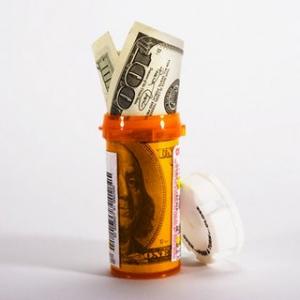
As the health care debate rages on in town hall meetings and on Capitol Hill, a private sector company, LED Saving Solutions, is focusing on cost containment by offering $100 million in LED lighting retrofits at zero out-of-pocket expense to over 100 hospitals and major hospital groups across the United States.
To date, energy efficiency has been largely left out of the health care debate even though 50 percent or more of a hospital’s electricity costs typically go toward lighting. LED (light emitting diode) lighting reduces electricity costs by 80 percent, which adds up to hundreds of millions of dollars of savings each year for health care.
In addition to energy efficiency, LED bulbs provide increased health and patient wellness where increased light quality is beneficial to patients and the productivity of the hospital staff. Furthermore, given that LED bulbs do not contain mercury, found in fluorescent bulbs, the benefit to the environment comes in the reduced chemical impact as well as the reduced carbon dioxide as the bulbs use far less energy.
In the past, the upfront retrofit expenses for the new generation of LED bulbs have been cost-prohibitive for hospitals. Through partnerships with more than seven major manufacturers, LED Saving Solutions is able to offer the $100 million LED lighting incentive to help make health care more affordable for Americans, at zero cost to patients and taxpayers. This offer extends to the first 100 hospitals that request up to $1 million in state-of-the-art lighting at zero out-of-pocket expense. The offer includes a free lighting energy audit and free retrofit bulb installation. LED Saving Solutions has forged production and financial partnerships that allow it to take on the initial cost of replacing the bulbs and will only get paid based on a portion of the savings generated each month, making the retrofit cash-flow positive for hospitals from the start.
Because hospitals typically operate 24 hours per day every day, a significantly larger portion of their energy consumption comes from lighting as compared with other commercial buildings. Since LED bulbs last between 50,000-70,000 hours, over the next 7 years the lighting retrofit will generate approximately $500,000 annual net cash-flow savings for each major hospital or hospital group that currently spends more than $1 million annually on lighting. The result is that a single participating hospital could save approximately $3.5 million; collectively, 100 participating hospitals stand to save more than $350 million.
Tax incentives and reduced maintenance costs of switching out bulbs also add to the bottom line in the first year and subsequent years. Based on a reduction of 10 lbs of CO2 emissions for $1 saved in electricity, the environmental benefit of saving $350 million in electric costs is equal to 3.5 billion lbs of greenhouse gases.
“Lighting accounts for about 20 percent to 30 percent of commercial electricity costs, but it is more than 50 percent of a typical hospital’s electricity costs, simply because the lights are often on 24 hours a day for the entirety of each year. So, LED lighting is a powerful scalpel in cutting out the escalating costs of operating a hospital.” - Charlie Szoradi LEED AP, President of LED Saving Solutions.
“Many of our hospital clients are moving toward mercury-free initiatives, and since these LED bulbs have no mercury we see this as one step toward reaching the goals. Since health care accounts for almost 20 percent of our national GNP, hospitals can lead the way for other industries,” Julie Becker, President of WHEN.org, Women’s Health & Environmental Network said. “Beyond the utility bill savings, energy efficiency reduces the greenhouse gases that have an adverse impact on public health. So, implementing smart LED technology can reduce health care costs over the long term as well as the short term.”

